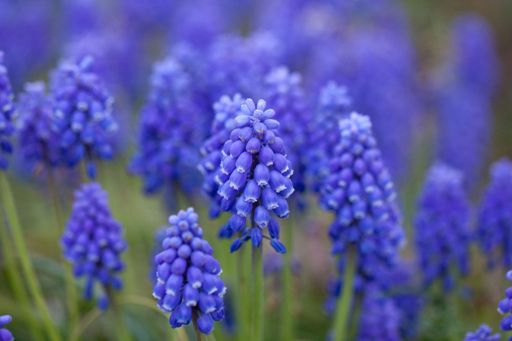Good things come in small packages

It’s the little things in life that make us happy, the saying goes. If that’s true, then so-called minor Dutch bulbs should bring extreme joy, especially for gardeners, says University of Missouri Extension horticulturist David Trinklein.
Even though the flowers of minor bulbs are small, they provide lovely displays of color when planted en masse, Trinklein says. “The tendency of these plants to flower very early makes them welcome harbingers of spring.”
Plant all spring-flowering bulbs in October, he says. Soil is still warm enough for the bulbs to establish a good root system before winter. Narcissus, tulip and hyacinth rule the Dutch bulb market, but Trinklein says other minor bulb species deserve consideration.
Crocus
There are about 80 species of crocus, the best-known minor bulb. The 30 cultivated species, known commercially as Dutch hybrids, come in a variety of colors and some have striped blooms. Although hybrids flower later, they bear larger, showier flowers. In all cases, the cup-shaped, solitary, salverform flowers taper into a narrow tube. Most crocus grow 4-5 inches tall and flower in late winter or early spring.
Dutch iris
The dwarf Dutch iris rarely grows more than 10 inches tall. Most cultivars bear blue flowers with contrasting markings. They flower in late February or early March. Trinklein says they make an excellent choice for sunny borders or along bodies of water. Unlike many other types of iris, Dutch iris forms true bulbs.
Glory-of-the-snow
Glory-of-the-snow blooms early with small blue flowers. The centers of its flowers blend to pale blue or white, and the central stamens are yellow. Its ribbon-like leaves grow to 6 inches. Glory-of-the-snow naturalizes well in sunny areas. Plant in large masses for showy displays, says Trinklein.
Grape hyacinth
Grape hyacinth bears blue flowers that look like small urns attached to dense scapes that are 6-9 inches high. Its lightly scented flowers appear in early spring. The foliage is about a quarter-inch wide and up to 12 inches long. Grape hyacinth grows well in full sun or partial shade. Trinklein says it combines ideally with yellow cultivars of the larger-flowered Dutch bulbs such as narcissus and tulip.
Siberian squill
Siberian squill produces small spikes of drooping blue flowers. It grows to a height of about 6 inches and produces strap-like leaves about a half-inch wide. Siberian squill usually blooms in spring. Native to woodland settings, it prefers a sunny setting but tolerates partial shade.
Snowdrop
Snowdrop is among the earliest spring bulbs, blooming in early February, depending on the mildness of the winter. Its white flowers are about an inch in diameter and droop from the flower stem held slightly above the foliage. The flower’s three inner segments bear a conspicuous green crescent at their tips. When snowdrops bloom, spring cannot be too far off.
Winter aconite
Winter aconite produces yellow buttercup-like flowers that appear in late winter and early spring. It grows to a height of only about 4 inches and tends to reseed itself once established. Winter aconite flourishes in full sun or partial shade but prefers mild temperatures.
Tips for major impact from minor bulbs
For greatest effect, plant minor bulbs in groups (“drifts”) of 50 or more, not lined in a row, says Trinklein. Plant about 3 inches apart at a depth equal to about three times their height.
Minor bulbs need a loose, well-drained soil to grow and bloom well. Incorporate organic matter to improve poorly drained soils. If soil is heavy, plant bulbs in a rock garden or on raised mounds for better drainage.



